
INDOOR AND BUILT ENVIRONMENT
Scope & Guideline
Enhancing Lives Through Indoor Environmental Research
Introduction
Aims and Scopes
- Indoor Air Quality and Health:
Research in this area examines the impact of indoor air pollutants, ventilation strategies, and environmental controls on occupant health and comfort, emphasizing the significance of maintaining a healthy indoor atmosphere. - Thermal Comfort and Energy Efficiency:
This scope includes studies on thermal comfort models, energy consumption analyses, and the performance evaluation of heating and cooling systems, aiming to optimize energy efficiency while ensuring occupant comfort. - Building Design and Sustainability:
This area focuses on innovative building design practices, including passive design strategies, sustainable materials, and techniques to reduce energy usage and environmental impact, promoting a holistic approach to sustainable architecture. - Simulation and Modeling:
Utilizing computational fluid dynamics (CFD) and other simulation techniques, this research explores airflow dynamics, pollutant dispersion, and thermal performance, providing insights into optimizing building designs for better indoor environments. - Cultural and Contextual Adaptation:
This unique focus examines how cultural and local factors influence building design and adaptation strategies, particularly in traditional and historical contexts, ensuring that modern interventions respect local heritage.
Trending and Emerging
- Impact of COVID-19 on Indoor Environments:
Research exploring the implications of the COVID-19 pandemic on indoor air quality, ventilation strategies, and infection control has surged, reflecting the urgent need for effective measures in preventing airborne diseases in shared spaces. - Smart Building Technologies:
There is an increasing focus on integrating smart technologies, such as IoT and AI, into building management systems, aiming to enhance indoor environmental quality and energy efficiency through real-time data and automation. - Resilience and Climate Adaptation:
Studies addressing how buildings can adapt to climate change and extreme weather events are on the rise, emphasizing the importance of resilience in building design and urban planning. - Biophilic Design and Wellbeing:
Research on biophilic design principles, which promote connections to nature within built environments, is trending, highlighting their positive effects on occupant wellbeing and productivity. - Behavioral Response to Indoor Environments:
An emerging area of interest involves understanding how occupant behavior influences indoor environmental quality and vice versa, incorporating psychological and sociological perspectives into building science.
Declining or Waning
- Traditional Construction Techniques:
There has been a noticeable reduction in studies focusing on traditional construction methods and materials, possibly as the field shifts towards modern, sustainable technologies and practices that prioritize energy efficiency over historical methods. - Generalized Indoor Environmental Studies:
Research that broadly addresses indoor environmental conditions without specific applications or contexts has waned, as the journal increasingly emphasizes targeted studies that connect indoor environments to specific health outcomes or design strategies. - Non-Quantitative Assessments of Indoor Environments:
The journal has seen fewer qualitative studies or those relying on non-empirical assessments, as there is a growing preference for quantitative analyses and data-driven research that can provide more robust conclusions.
Similar Journals
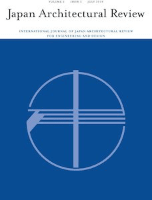
Japan Architectural Review
Fostering collaboration for innovative architectural solutions.Japan Architectural Review is a premier open-access journal published by WILEY, dedicated to advancing the fields of architecture, environmental engineering, and modeling and simulation. Since its inception, this journal has emerged as a critical platform for disseminating innovative research, offering insights into the latest trends and challenges facing the built environment and sustainability practices. With an impact factor reflecting its growing influence, especially in the Q2 category of Architecture and notable rankings in environmental engineering and modeling disciplines, it serves as an essential resource for researchers, professionals, and students alike. The journal's commitment to open access since 2018 has further enhanced its reach, making high-quality research accessible to a global audience. Spanning an important timeline from 2019 to 2024, the Japan Architectural Review facilitates a collaborative discourse among scholars, encouraging innovative solutions to contemporary architectural challenges.

International Journal of Clothing Science and Technology
Exploring Sustainable Solutions for the Fashion Industry.International Journal of Clothing Science and Technology, published by Emerald Group Publishing Ltd, is a leading academic journal dedicated to advancing the field of clothing science and technology. With a commitment to high-quality research since its inception in 1989, this journal effectively bridges the gap between innovation and application within the realms of textiles, fashion, and related materials science. The journal holds a respectable Q3 ranking across several categories, including Business, Management and Accounting (miscellaneous) and Materials Science, emphasizing its relevance in both industry and academia. Although it is not Open Access, the journal nonetheless provides critical insights and findings that are essential for researchers, professionals, and students aiming to navigate the complex world of clothing technology. From sustainable practices to new fabric technologies, the International Journal of Clothing Science and Technology remains a vital resource, equipping its readers with the latest knowledge to drive progress in this dynamic field.

Buildings
Advancing Knowledge in Building Design and ConstructionBuildings is a premier peer-reviewed journal published by MDPI, focusing on the multidisciplinary aspects of architectural and civil engineering. Established in 2011, this Open Access journal has quickly gained recognition in the academic community and is currently classified in the Q1 category for Architecture and Q2 for Building and Construction, as well as Civil and Structural Engineering, reflecting its significant impact within these fields. With Scopus rankings placing it in the top tier of architecture and construction disciplines, Buildings provides a platform for innovative research and practical applications that push the boundaries of knowledge in building design, sustainability, and infrastructure development. The journal, based in Switzerland and intended for an international audience, welcomes various types of content including research articles, reviews, and case studies, ensuring a comprehensive resource for researchers, professionals, and students alike.
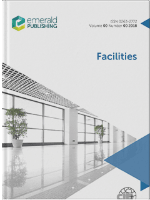
Facilities
Elevating research in architecture and human factors for over four decades.Facilities is an esteemed international journal, published by Emerald Group Publishing Ltd, dedicated to advancing the scholarly discourse in the multifaceted areas of architecture, building construction, and human factors and ergonomics. Since its inception in 1983, the journal has celebrated over four decades of research contributions, maintaining a robust E-ISSN of 1758-7131 while its print identifier is ISSN 0263-2772. With its distinguished status, it ranks in the Q1 quartile in Architecture and is positioned in the Q2 quartile for both Building and Construction and Human Factors and Ergonomics in 2023. The journal’s Scopus rankings highlight its relevance, achieving a remarkable 88th percentile in Architecture and 68th percentile in Building and Construction. Although not an Open Access publication, Facilities provides vital insights and research findings that cater to academics, practitioners, and students alike, fostering innovation and informed practices across these dynamic fields. Its commitment to high-quality scholarship makes it an indispensable resource for anyone engaged in improving the interaction between people and the built environment.
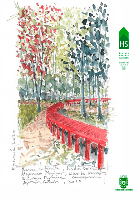
Revista Habitat Sustentable
Pioneering Research for a Greener TomorrowRevista Habitat Sustentable, published by UNIV BIO-BIO in Chile, is a dynamic open access journal that has been contributing to the fields of architecture, engineering, and sustainable development since its establishment in 2011. With an ISSN of 0719-0700, this scholarly platform stands out for its commitment to disseminating high-quality research that addresses pressing issues in sustainability and urban planning. Currently, it holds commendable rankings in several categories, including Q2 in Architecture and Q3 in Urban Studies, reflecting its growing influence and outreach across various disciplines. The journal's mission is to foster interdisciplinary dialogue and encourage innovative approaches to habitat sustainability, making it an essential resource for researchers, professionals, and students engaged in addressing the complex challenges of our built environment. Accessible to a global audience, the Revista Habitat Sustentable is poised to play a pivotal role in shaping future research and policy in sustainable living and development.

JOURNAL OF ENVIRONMENTAL RADIOACTIVITY
Transforming findings into action for a sustainable future.JOURNAL OF ENVIRONMENTAL RADIOACTIVITY, published by Elsevier Science Ltd, is a prestigious peer-reviewed journal dedicated to the field of environmental science with a particular focus on the implications and management of radioactivity in the environment. Since its inception in 1984, the journal has served as a vital platform for researchers, scientists, and professionals to disseminate new findings that intersect with areas such as environmental chemistry, health, toxicology, pollution, and waste management. With a strong reputation reflected in its 2023 Q2 rankings across multiple categories and respectable Scopus rankings, it offers valuable insights and rigorous research that shape the discourse on environmental safety and public health. Although it does not operate under an open-access model, subscribers benefit from high-impact articles that push forward the boundaries of knowledge in the management and understanding of radioactive contaminants. This journal is essential for anyone involved in environmental research or policy-making who seeks to stay informed about the latest developments in this critical area of study.
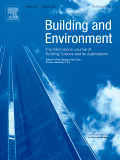
BUILDING AND ENVIRONMENT
Advancing sustainable solutions for a resilient future.BUILDING AND ENVIRONMENT, published by Pergamon-Elsevier Science Ltd, stands as a premier journal in the fields of Building and Construction, Civil and Structural Engineering, Environmental Engineering, and Geography, Planning, and Development. With its ISSN 0360-1323 and E-ISSN 1873-684X, this esteemed publication has garnered significant acclaim, achieving a Q1 ranking in multiple categories for 2023, reflecting its influential role in advancing research and innovation within these domains. Spanning from 1976 to 2024, the journal invites contributions that explore the intersection of sustainable design, energy efficiency, and urban development, addressing critical issues faced in modern architecture and environmental impact. Although it does not offer open access, its comprehensive articles and reviews are pivotal for researchers, professionals, and students dedicated to creating sustainable built environments. Situated in the United Kingdom, the journal serves as a vital resource for those aiming to contribute to the knowledge base in this rapidly evolving ecologically focused field.

International Journal of Built Environment and Sustainability
Empowering Researchers to Build a Sustainable FutureInternational Journal of Built Environment and Sustainability, published by PENERBIT UTM PRESS, serves as a pivotal platform for the dissemination of research in the fields of architecture, urban planning, and sustainable development. With an E-ISSN of 2289-8948 and having embraced Open Access since 2014, this journal ensures that critical findings in built environment research are accessible to a global audience, fostering innovation and collaboration among researchers, professionals, and students. Although the H-index and specific scope are currently not detailed, the journal's commitment to advancing sustainable practices in the built environment makes it an invaluable resource for those dedicated to tackling the pressing challenges of sustainability in our communities. As part of its mission, the journal prioritizes high-quality, peer-reviewed articles that contribute to both academic theory and practical applications, solidifying its role in shaping the future of our built environments.
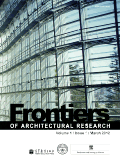
Frontiers of Architectural Research
Illuminating the Path of Architectural AdvancementFrontiers of Architectural Research, published by KEAI PUBLISHING LTD, stands at the forefront of interdisciplinary scholarship, addressing contemporary challenges in the fields of architecture, urban studies, building and construction, and archaeology. Since its establishment in 2012, this open-access journal has rapidly gained recognition, achieving prestigious rankings in the 2023 category quartiles, including Q1 placements in both Architecture and Archaeology. With an impressive Scopus rank of #5 out of 354 in Archaeology and #10 out of 189 in Engineering - Architecture, it demonstrates its significant influence and contribution to advancing architectural research. Frontiers of Architectural Research embraces a broad scope that fosters innovative discourse and practical solutions, catering to a diverse audience of researchers, professionals, and students keen on exploring the intersection of culture, environment, and technology. By ensuring immediate access to research findings, the journal not only enhances the visibility of scholarly work but also encourages collaborative dialogues that shape the future of architectural practice.

Journal of Architectural Engineering
Advancing the Future of Architectural InnovationThe Journal of Architectural Engineering, published by the ASCE (American Society of Civil Engineers), stands as a pivotal resource in the interdisciplinary fields of architecture and engineering. With an ISSN of 1076-0431 and E-ISSN 1943-5568, this journal has garnered a notable reputation since its inception in 1995, currently converging towards 2024. Boasting a Q1 ranking in Architecture and Visual Arts and Performing Arts, alongside respectable Q3 rankings in Building and Construction and Civil and Structural Engineering, the journal places itself in the elite class of scholarly publications, evidenced by its impressive Scopus rankings. Its commitment to providing cutting-edge research ensures comprehensive coverage across various aspects of architectural engineering, facilitating robust interdisciplinary dialogues. Although the journal operates under a traditional access model, its impact on the academic community remains profound, making it an essential platform for researchers, professionals, and students who seek to push the boundaries of knowledge in their respective fields. This journal not only aims to stimulate innovative ideas but also fosters a collaborative environment for advancing sustainable architectural practices in a rapidly evolving built environment.